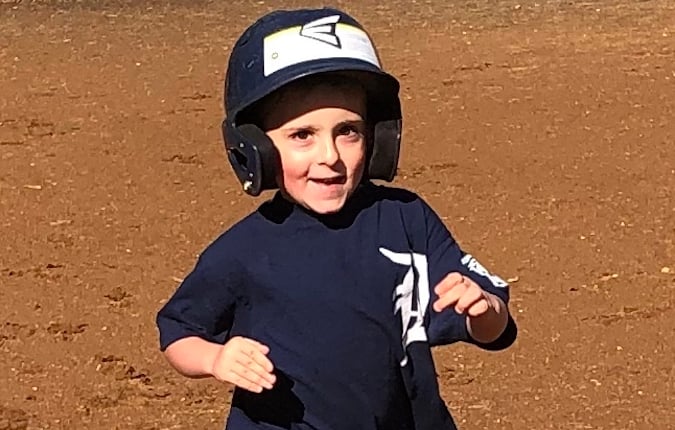
Helping Hank Grow Up Stronger

Five-year-old Hank loves dancing. He also loves singing and reading and is obsessed with baseball and soccer. Hank’s parents, Lindsay and Craig, weren’t always so sure he would live such a full life. When Hank was just 3 months old, they noticed he often clenched his right hand and used it less than his left.
The family lived in Mexico City at the time. They sought help there from a neurologist who told them Hank had experienced a prenatal stroke. A second opinion from Children’s National Hospital led to different diagnosis. Hank had unilateral polymicrogyria (PMG), a brain malformation, which manifested as weakness in his right side. The condition causes a variety of symptoms, from difficulties in swallowing to challenges with speech. It also can lead to paralysis, seizures, cerebral palsy, vision problems and epilepsy.
“PMG is not a well-studied disorder,” Lindsay says. “We didn’t know if Hank would ever be able to walk or read. But the team at Children's National walked us through what we needed to know during an incredibly scary time.”
Olga Morozova, MD, a pediatric rehabilitation specialist, and Steve Weinstein, MD, a neurologist (now retired), recommended immediate physical and occupational therapy. By the time Hank turned one, his family had moved back to the Washington, D.C., area. They visited Children’s National regularly for intensive physical therapy sessions over the next few years. Outgoing Hank loved coming to the hospital for his therapy.
“He was like the mayor of the physical therapy department,” Lindsay says. “Everyone knew his name and integrated baseball games into his therapies because they knew he loved the sport. The improvements in his physical abilities were out of this world.”
Hank has a less vigorous physical therapy routine these days and focuses on enjoying life.
“Hank still sees specialists at Children’s National annually,” Craig says. “Should anything come up with his PMG, we know we have expert help close by. We could not be more grateful.”
Hank's Care Team Departments
Care Team


Be the Reason a Child Smiles
Every day at Children’s National Hospital, lives are changed through compassionate care and groundbreaking discoveries. Your charitable donation helps us deliver expert treatment and hope to thousands of children and families.
Meet the patients whose stories inspire us—and see the difference your support makes.







